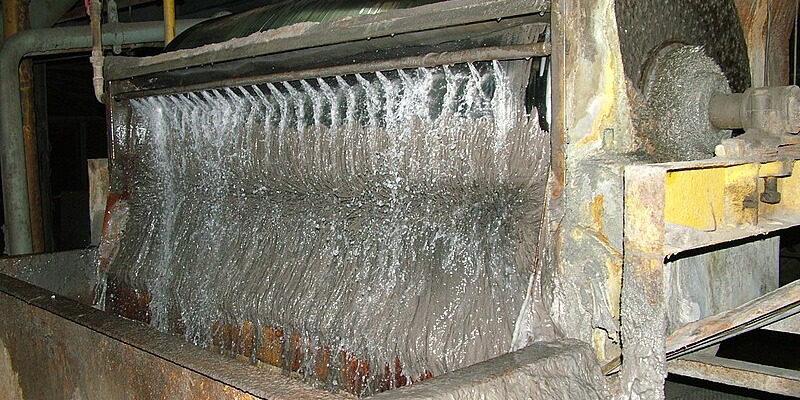Innovative Uses of Magnetic Separators in the Pharmaceutical Industry
In the pharmaceutical industry, maintaining high levels of product purity and safety is paramount. One of the most innovative and effective technologies that play a crucial role in achieving these standards is the Magnetic Separator. These devices help to remove ferrous contaminants from raw materials and finished products, ensuring that drugs are free from impurities that could compromise their efficacy or safety.
The Role of Magnetic Separators in Pharmaceutical Manufacturing
Magnetic separators have become indispensable tools in pharmaceutical production. Their primary function is to eliminate metal contaminants during various stages of production. This is particularly important because even the smallest traces of metal can have serious consequences for drug safety and quality. Here are a few key stages where magnetic separators provide significant benefits:
- Raw Material Inspection: During the processing of raw materials, metal contaminants from machinery or external sources can find their way into the batch. Magnetic separators prevent these particles from entering further production stages.
- Post-Granulation: After granulation, pharmaceutical ingredients are further refined. Magnetic separators ensure that no ferrous contaminants are present, maintaining the purity of the granules.
- Final Product Testing: Before packaging, the final product passes through magnetic separators one last time to confirm the complete absence of metal contamination.
Enhancing Drug Safety with Magnetic Separators
Pharmaceutical products are consumed directly by patients, which makes safety the top priority. Magnetic separators act as a safeguard, ensuring that every pill, powder, or liquid is free from harmful metal fragments. These devices detect and remove ferrous materials that could otherwise lead to product recalls or patient harm.
For example, in tablet manufacturing, magnetic separators can eliminate tiny metal particles that might have been introduced during the tablet pressing process. By using separators strategically throughout the production chain, manufacturers can protect consumers from unintended contamination.
Types of Magnetic Separators Used in the Pharmaceutical Industry
Different types of magnetic separators are designed for specific applications within pharmaceutical production. Here are the most commonly used separators:
- Plate Magnets: These are installed above conveyors to remove large pieces of ferrous metals before they enter critical production areas.
- Grate Magnets: Used in hoppers and chutes, these separators capture fine metal contaminants from dry powders and granules.
- Magnetic Drum Separators: Effective for both wet and dry materials, these drums are often employed in large-scale pharmaceutical manufacturing facilities.
- Magnetic Filters: Specifically used in liquid drug production, these separators remove ferrous particles from syrups and liquid suspensions.
Each of these separators is tailored to specific manufacturing needs, ensuring that no matter the form of the pharmaceutical product, it can be protected from contamination.
Improving Product Quality Through Magnetic Separation
Beyond safety, Magnetic Separators also enhance the quality of pharmaceutical products. Metal contamination can affect not only the safety but also the efficacy of drugs. For instance, metal fragments can alter the chemical composition of active pharmaceutical ingredients (APIs), reducing their effectiveness.
Magnetic separators ensure that the final product is not only safe but also maintains its intended potency. By eliminating ferrous particles, these devices help manufacturers meet the strict quality standards set by regulatory bodies such as the FDA and EMA.
Compliance with Industry Regulations
The pharmaceutical industry is highly regulated, with stringent guidelines for product purity. Magnetic separators help manufacturers comply with these regulations by minimizing the risk of contamination. They contribute to Good Manufacturing Practices (GMP) by providing a reliable method of metal detection and removal.
For example, FDA regulations require manufacturers to have systems in place to prevent contamination. Magnetic separators fulfill this requirement by acting as an integral part of the quality assurance process. By incorporating these devices, pharmaceutical companies can avoid costly penalties and protect their brand reputation.
Sustainable and Cost-Effective Solutions
In addition to their safety and quality benefits, magnetic separators offer a cost-effective and sustainable solution for pharmaceutical manufacturers. By preventing contamination early in the production process, they help reduce waste and prevent product recalls. This not only saves money but also reduces the environmental impact of disposing of contaminated batches.
Furthermore, magnetic separators have a long operational life and require minimal maintenance, making them a cost-efficient investment for pharmaceutical companies. Their durability ensures that they continue to perform effectively over time, providing consistent protection against contamination.
Innovations in Magnetic Separator Technology
As pharmaceutical manufacturing evolves, so too does the technology behind magnetic separators. New innovations are making these devices more efficient and versatile. For example, advanced magnetic separators now feature stronger magnets and improved designs that allow them to capture even the smallest metal particles.
In addition, automated magnetic separators are being integrated into modern pharmaceutical production lines. These automated systems not only detect and remove metal contaminants but also provide real-time monitoring and alerts, further enhancing product safety.
The Future of Magnetic Separation in Pharmaceuticals
As the demand for high-quality, contaminant-free pharmaceutical products grows, magnetic separators will continue to play a critical role in the industry. Advances in technology will make these devices even more efficient and adaptable to the changing needs of manufacturers.
In the future, we can expect magnetic separators to become an even more integral part of pharmaceutical production, helping to ensure that drugs are not only safe and effective but also produced in a way that meets the highest standards of quality and sustainability.
Conclusion
Magnetic separators are an essential component of modern pharmaceutical manufacturing. By removing ferrous contaminants at every stage of production, they help ensure the safety and quality of pharmaceutical products. As the industry continues to evolve, these devices will become even more critical to meeting regulatory requirements and maintaining the highest standards of drug purity.
With innovations on the horizon, the role of magnetic separators in pharmaceuticals will only expand, offering even greater protection against contamination and supporting the industry's commitment to producing safe and effective medications.





Comments